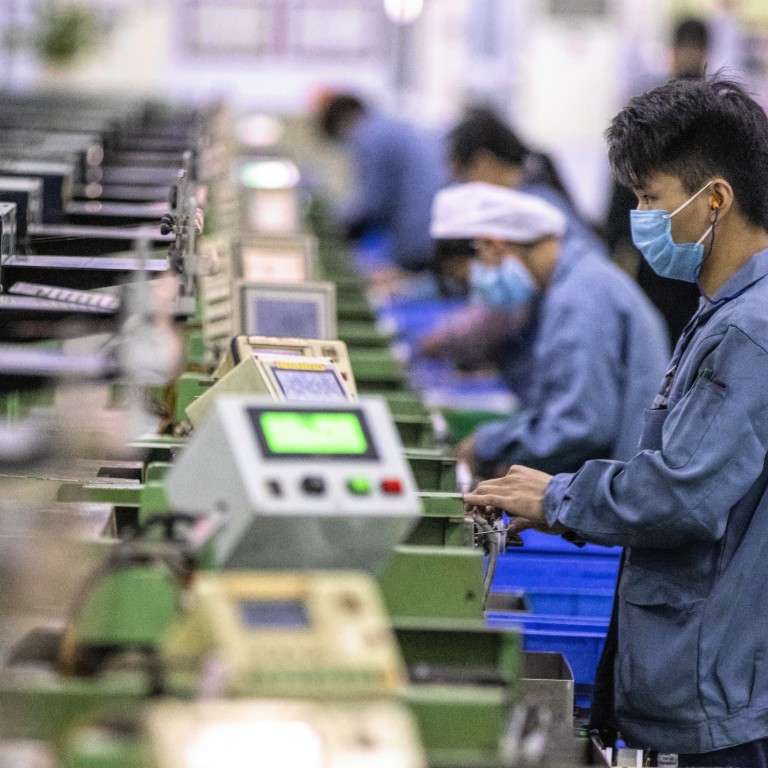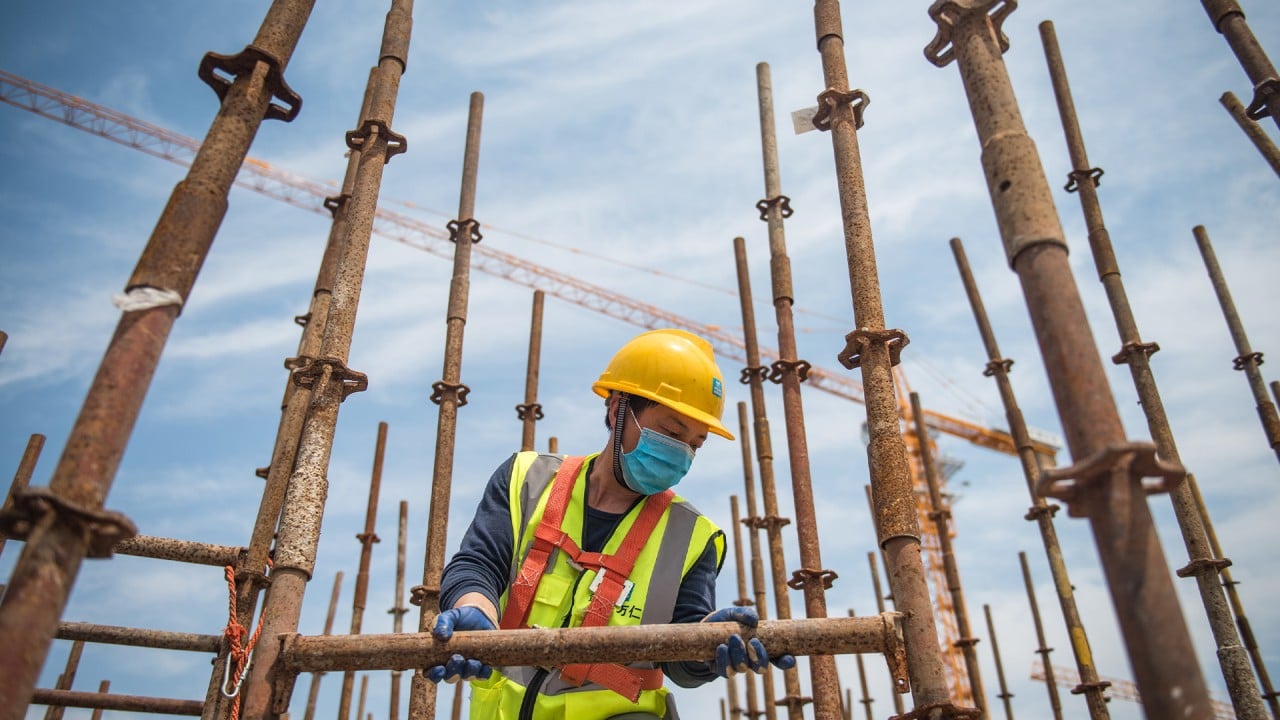
China’s factory prices continued to fall in May, but consumer inflation slowed
- China’s producer price index (PPI) fell 3.7 per cent year-on-year in May, highlighting the ongoing impact of the coronavirus pandemic
- Consumer inflation rose 2.4 per cent from a year earlier, down from a 3.3 per cent gain in April
China’s manufacturing sector continued to suffer from the impact of the coronavirus pandemic in May, as data released on Wednesday showed factory gate prices plunged at a faster pace last month.
The producer price index (PPI), reflecting the prices that factories charge wholesalers for their products, fell 3.7 per cent year-on-year in May, data from the National Bureau of Statistics (NBS) showed, the sharpest decline since March 2016.
The consumer price index (CPI), meanwhile, rose 2.4 per cent from a year earlier, down from a 3.3 per cent gain in April, the NBS said. Analysts had expected an inflation rate of 2.7 per cent.
As the domestic pandemic control situation was overall stable in May, production and commercial activities were restarted in an orderly fashion, which helped improve market demand and supply
Within the CPI, food prices jumped 10.6 per cent year-on-year, down 3.5 per cent from April.
Prices for pork – a staple meat in China – were up 81.7 per cent, a decline of 8.1 per cent from a month earlier.
Core inflation, which excludes food and energy prices, inched up 1.1 per cent in May.
“As the domestic pandemic control situation was overall stable in May, production and commercial activities were restarted in an orderly fashion, which helped improve market demand and supply,” Dong Lijuan, an NBS official, said in an online statement.
Consumer inflation in the first five months of 2020 was up 4.1 per cent year-on-year, higher than the government target of 3.5 per cent, Dong said.

01:10
What are CPI and PPI?
Food price inflation will probably decline further this year – dragging down headline CPI – as pork prices recover from supply disruptions caused by the African swine fever, said Martin Rasmussen, China economist at Capital Economics.
China’s statistics agency said the fall in the PPI was driven largely by a 57.6 per cent year-on-year decline in petroleum and gas prices last month, down 9.1 per cent from April.
Wen Bin, chief macro analyst at China Minsheng Banking Corp, said the depth of the PPI contraction – the largest in four years – was unexpected, but reflected insufficient demand amid the coronavirus and crude oil shocks.
While China’s economy is slowly getting back on track, the coronavirus is still spreading in some parts of the world, meaning businesses are facing weak foreign demand for their products.

05:02
Coronavirus backlash further fraying China’s ties to global economy
“The weakness in price pressures should ease in the coming months, as the ongoing ramp up in policy stimulus drives a further recovery in activity,” Rasmussen said.
Protecting jobs has emerged as the top priority for Beijing after it abandoned an economic growth target this year for the first time since 2002.


